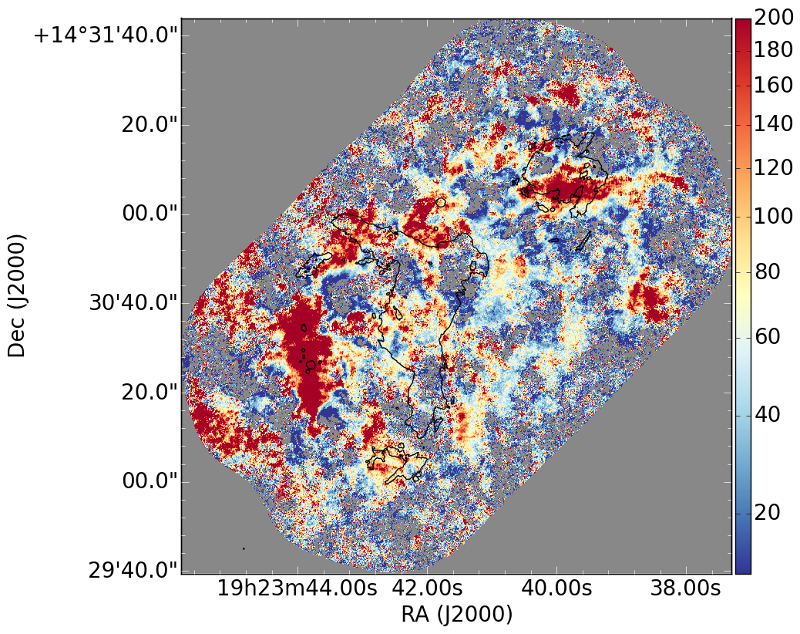| EPoS Contribution |
|
The effects and extent of feedback on dense prestellar gas near proto-OB stars
Adam Ginsburg ESO, Munich, DE | |
| For a large fraction of all stars, the earliest phase of their collapse occurs within the range of influence of high-mass stars. The temperature of the prestellar gas is expected to affect the fragmentation process, potentially increasing the typical fragment size and shifting the stellar mass function. The feedback from massive stars is therefore essential for determining what the second generation of stars in a cloud looks like. I will present ALMA observations of a high-mass star-forming region in which dozens of O-stars have already formed, yet the gas mass is still much larger than the stellar mass. Temperature measurements throughout the cloud reveal that regions within about 0.1 parsecs of high-mass protostars are significantly warmer than their surroundings, reaching temperatures of 100-200 K. However, a large fraction of the gas remains relatively cool, with T<50 K. Surprisingly, there is no sign of increased dense gas temperature near the ionized gas, suggesting that the photons from main sequence OB stars escape the cloud rather than heating the gas. The most massive cores also appear to be associated with the warmest gas in general. | |
 | |
| Caption: A temperature map using the H2CO 3(2,1)-2(2,0)/3(0,3)-2(0,2) line ratio assuming LTE (which is an incorrect assumption!) and optically thin emission. The warmest features surround high-mass protostars. This map, made from ALMA data, includes only 12m data (it is missing short spacings) and therefore the temperatures are likely to be systematically overestimated. Nonetheless, the lack of correlation with the centimeter continuum emission (black contours) indicates that the evolved O-stars have little effect on the dense gas (ncrit ˜ 106 cm-3), while the proto-O-stars have a large effect on their surroundings. | |
|
Suggested Session:
Stellar Feedback | |

